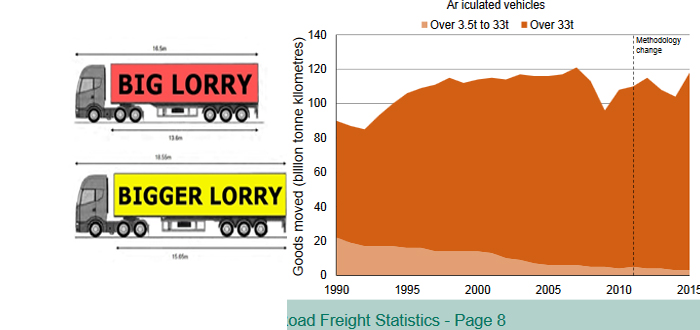-
ROSSLARE EUROPORT TARGETS HEALTH & SAFETY WITH CAMERA TELEMATICS PARTNERSHIP - 2 days ago
-
Landmark Study Reveals Wearable Robotics Significantly Boost Safety and Efficiency in Industrial Environments - July 24, 2024
-
Visku Tackle The Retail Seasonality Challenge One Pallet At A Time - July 22, 2024
-
KAMMAC AND BERGEN LOGISTICS STRENGTHEN FASHION & LIFESTYLE SERVICES IN THE UK - July 19, 2024
-
TENTBOX EXTENDS PARTNERSHIP WITH ARROWXL TO SUPPORT INCREASING DEMAND - July 17, 2024
-
The Perfume Shop improves customer journeys while driving profitability in partnership with Scurri - July 17, 2024
-
ZEROMISSION SECURES £2.3M ($3M) INVESTMENT TO ACCELERATE ELECTRIC FLEETS - July 16, 2024
-
BCMPA CELEBRATES SUCCESS OF 2024 CONFERENCE - July 15, 2024
-
Best of the Best: Jungheinrich Celebrates Triple International Award Win - July 12, 2024
-
GOPLASTICPALLETS.COM CALLS ON NEW CHANCELLOR RACHEL REEVES TO CONSIDER PLASTIC PACKAGING TAX REFORM - July 10, 2024
Report claiming benefits of longer lorries is flawed, say campaigners.
Campaigners have reacted angrily to the publication by the Department of Transport of a report which claims that longer semi-trailers can reduce congestion, pollution and collisions.
Freight on Rail is concerned that the report, which was compiled by Risk Solutions and is five years into a 15 year trial of the 7ft longer lorries on UK roads, is based on flawed data and incorrect assumptions and ignores important safety factors.
Philippa Edmunds, Freight on Rail manager, said:
“Despite what the Department for Transport claims, longer semi-trailers are not the answer to reducing collisions, congestion or pollution and are actually more dangerous than standard HGVs on urban and town centre roads, because of their 7ft tail swing and extended blind spot.
“Given that all the safety, environmental and economic arguments for longer lorries are based on them resulting in fewer but bigger fuller longer semi-trailers, Risk Solutions should be analysing the usage and loading patterns of existing lorries to find out what will happen in real life if these longer semi-trailers are allowed in general circulation. Instead it is using modelled data and planning to scale up the trial figures even though the trial participants are not representative of the haulage industry because the operators involved are self-selecting, the majority of whom are large operations who use specialist drivers.
“There is no question that longer semi-trailers save operators money, but this is because these bigger trucks result in lorries paying even less of the costs they impose on the economy and society with the taxpayer picking up the bill in terms of more road crashes, road damage, congestion and pollution and this is simply unacceptable.”
Freight on Rail has a number of concerns about the way the Report has been complied. They include:
Using a flawed assumption that increasing lorry sizes will result in fewer, better loaded trucks on the roads when there is simply no evidence to show this is achievable once the longer lorries are in general circulation. Currently only 34 per cent of HGVs on the roads are fully loaded and 30 per cent are travelling around completely empty. Current industry practice is to buy the biggest lorry available and use for all jobs, big or small. (see chart) Even load data from the trial fails to support this claim with the trial lorries fully loaded for only a third (34 per cent) of their journeys with the extra length not being used at all for around half of their journeys.
Using origin and destination post codes to model likely routes, instead of more accurate GPS data, means it is impossible to understand to what extend these vehicles’ movements compare to standard vehicles, especially on urban roads. For instance, models ignore unforeseen circumstances which can lead to diversions, probably the most dangerous part of any route.
Ignoring or discounting safety concerns surrounding the increased tail swing and blind spot of these longer lorries – which is almost double that of standard HGVs when making right and left turns – when negotiating urban roads. Many urban and town centre roads in the UK are not able to accommodate such large vehicles, forcing them to perform movements that put other, more vulnerable, road users at risk such as entering adjacent lanes and swinging over kerbs, traffic islands.
Freight on Rail want to see future reporting using real GPS data so that the trial can establish the exact routes and types of roads the longer semi-trailers are using with special attention to urban and town centre use. We also need a rational explanation of why longer semi-trailers, which are even bigger than standard HGVs, would get better utilisation than existing ones, when allowed in general circulation, given that the whole case for longer semi-trailers is predicated on this argument?

































